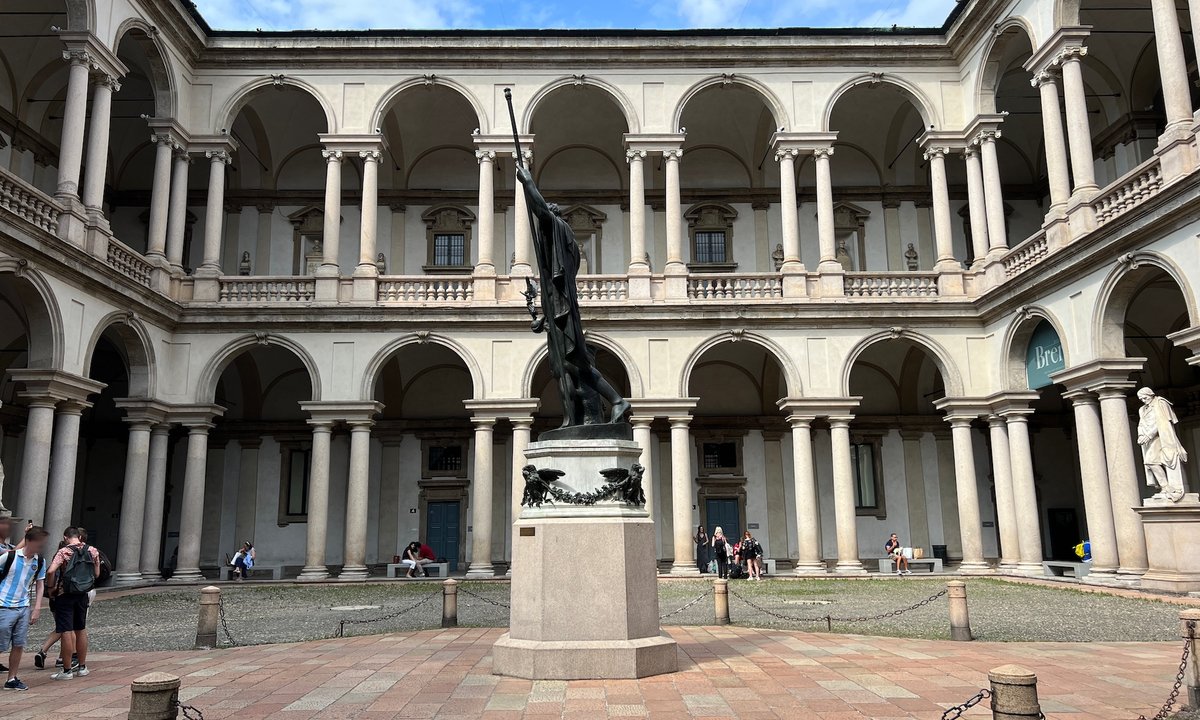The Pinacoteca di Brera, Milan’s most prestigious art gallery, has been rebranded as a multi-site arts complex resembling the Uffizi Galleries in Florence just weeks before the Milan museum opens a long-awaited space dedicated to 20th-century art.
From now on, the museum will be known as “Grande Brera”, an umbrella label that will include the National Braidense Library, run by the pinacoteca in the same building as the museum, and the Palazzo Citterio, a new modern art space next-door that will open its doors on 7 December.
The rebranding includes a “Grande Brera Milano” registered trademark, an octagonal logo and a petrol blue colour scheme, all of which were designed by the Qubit and Carmi e Ubertis communications companies in a project that cost €45,000. At a press conference on Thursday (26 September) at the Braidense, Angelo Crespi, the museum’s director, said the marketing material would also be used for other separate institutions in the complex, including the Accademia di Brera art school, the Ricordi Archive and the botanical gardens.
“The idea is that Grande Brera will be able to be a kind of mother brand, not only for the institutions I have the honour of directing, but also for the others based here,” Crespi said. “We will give even more strength to a place that is already perceived by visitors as a unified complex.”
Founded in 1776 by Maria Theresa, the Empress of Austria, the state-run Pinacoteca di Brera possesses one of Milan’s richest and most varied public art collections, including works by Tintoretto, Rubens, Van Dyck, Mantegna, Caravaggio, Titian and Bellini, as well as Francesco Hayez’s beloved painting The Kiss (around 1859).
The long-awaited inauguration of the Palazzo Citterio, an 18th-century palazzo that was bought by the government in 1972 to house the pinacoteca’s modern art collection, follows repeated delays due to planning permission obstacles. From December, the pinacoteca and Palazzo Citterio will be accessible with a single ticket; around 500,000 visitors are expected that month.
Crespi said that the Grande Brera model was inspired by the Uffizi Galleries, born by uniting the Uffizi, Palazzo Pitti and Boboli Gardens in 2014. A series of new signposts have been designed to guide visitors around the Milan complex.
Strikingly, the new logo bears the name of the city of Milan, despite the Brera having recently battled with the city-run museums for the right to display prized art collections like the Mattioli collection. Speaking at the conference, Tommaso Sacchi, Milan’s vice mayor for culture, struck a collaborative tone. “I believe that it will be important to know, frequent and live the Palazzo Citterio, the pulsating heart of the city,” he said.

